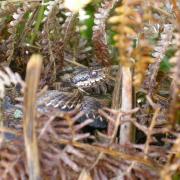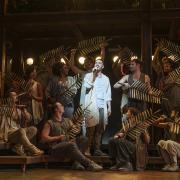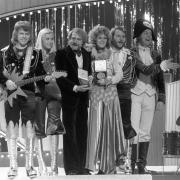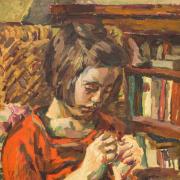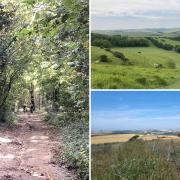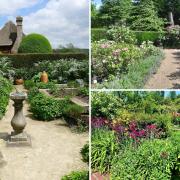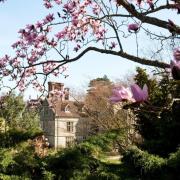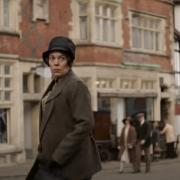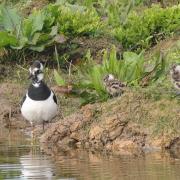Look around you the next time you are out and about in Sussex. There is a wealth of public sculpture just waiting to be discovered, as Jo Steele found out.
Large, small, bronze, stone, steel, on the facades of buildings, free standing – some sculptures are well-known, while others celebrate notable people. Some are obscure and take a bit of searching out.Peter Seddon, reader of arts practices and historiography at the University of Brighton, is on a mission to point out the wealth of sculpture around us.He was recently involved in a project listing every single public sculpture across Sussex. “Public sculpture isn’t just 19th Century blokes on plinths, or about celebrating local worthies, it also reveals our social history.“Some we walk past everyday and don’t think twice about. But visually, some can be arresting. For example, looking down a long avenue you may see a sculpture in the mist, it can look romantic. However, if you dig deeper you find out about the history of the place you are living in.”Deborah Urquhart,West Sussex County Council cabinet member for environment and economy, agrees. “The arts are a strong part of community life and make a contribution to the county’s cultural, health, economic, learning and skills landscape,” she says. “Public art helps celebrate our culture and heritage and adds to our enjoyment of public spaces.”Here in Sussex, we may not have the grand sculptures of the great industrial cities such as London, Manchester or Liverpool, or grand town halls with elaborate facades adorned with public art but, says Peter, we have a wealth of sculpture. He was the project co-ordinator for the National Recording Project for Sussex, a survey of public monuments and sculptures. The project was a Heritage Lottery funded collaboration between the University of Brighton and the Public Monuments and Sculpture Association. The list ran to more than 400 public sculptures across East and West Sussex.The ‘great age’ of public sculpture was the mid to late 19th Century. “People looked across to Paris where they seemed to be unveiling a new public sculpture every day,” he says. “It inspired confidence in people here to celebrate worthy people and philanthropy.”There was also an explosion of public sculpture following WWI, to celebrate those who had fought and died for the country.Among the most well-known public sculptures in Sussex is one to commemorate Queen Victoria. The memorial, in Grand Avenue, Hove, was designed by Thomas Brock in 1897. Brock also designed the fountain outside Buckingham Palace. “The sculpture shows Victoria as the matriarch of the nation,” says Peter. “The four reliefs on the base celebrate empire, commerce, industry and education. Empire faces out across the sea, commerce faces toward the west and the Atlantic, industry faces north towards the industrial heartland of Britain, and education faces east. At that time there was a push towards literacy, especially people being able to read the bible. The sculpture shows us the points of the national compass in Britain at that time.”Our public sculptures haven’t always been critically admired. Brighton's Jubilee Clock Tower, built in 1888 and designed to commemorate Queen Victoria’s golden jubilee of the previous year, was described by architectural historian Sir Nikolaus Pevsner as “worthless”. However, Brighton residents have retained an affection for the Clock Tower. “Victorian sculpture was out of fashion when Pevsner made that comment. Over the years the Clock Tower could have been moved as it is right in the middle of all the traffic. But thankfully it hasn’t, and has been restored,” says Peter.Other sculptures celebrate the lives of notable local people. Among them is a commemorative plaque to Eastbourne bandsman John Wesley Woodward. Woodward was one of those playing on the Titanic when it sank on 15 April 1912. The plaque can be seen at the rear of the current bandstand in the town.New public works of art are being added all the time around Sussex. Littlehampton’s ground-breaking seafront bench opened last July. The bench winds its way along the town’s promenade. Hundreds of local people, organisations and businesses have supported the bench by paying to have a personal engraving on one of its slats. The bench was funded by a grant from the Commission for Architecture and the Built Environment, and by local benefactor Gordon Roddick in tribute to his wife Anita, founder of the Body Shop.Meanwhile, we are lucky to have a unique spot for contemporary British sculpture right here in Sussex. Wilfred Cass and his wife Jeanette have established the Cass Sculpture Foundation in their 26-acre Goodwood garden.The charitable foundation commissions approximately 20 new monumental works annually, predominantly by contemporary British sculptors. The foundation’s key objective is to enhance the general public’s enjoyment and appreciation of the strength and quality of 21st Century British sculpture. To date, the foundation has commissioned 160 works from over 120 artists which have been placed in public and private collections all over the world. The couple consistently showcase an ever changing display of over 70 sculptures. All sculptures are for sale to provide funding for new commissions.The Foundation attracts visitors from around the world to Sussex.“Looking at sculpture is exactly like listening to music. You get a feeling from looking at it,” says Wilfred.He says no one has ever attempted such a project before, but he says: “It has really taken off. Because we sell the work we can commission more. It keeps the tradition of sculpture alive. Britain has a tradition of great sculptors such as Henry Moore and Barbara Hepworth. This is about planning for the future.”
For more information on the National Recording Project for Sussex see www.publicsculpturesofsussex.co.ukFor more information on the Cass Sculpture Foundation see www.sculpture.org.uk
East SussexIndian Memorial Gate, BrightonThe Indian Memorial Gate (1921) was given by the people of India, to commemorate the Indian soldiers who were in hospital at the Pavilion in WWI. It is dedicated to the inhabitants of Brighton and was unveiled by the Maharaja of Patiala in 1921. The gate is in the style of 16th century Gujerati buildings and can be found next to the Pavilion Buildings.
Kiss Wall, BrightonKiss Wall by Bruce Williams (1992) can be found on the promenade at Grand Junction Road. Made of a thick sheet of aluminium, when the light catches it right, the four-metre high wall shows six images of people kissing. Williams said the wall is a celebration, calling for equality, understanding and acceptance between all individuals.
Stream, St Leonards on SeaStream (2002) by artist Esther Rolinson is a light installation comprising a series of seven steel and blue glass columns. The columns extend along the roadside for some 40 metres. At night, the columns illuminate in sequence with blue light creating a ‘wave’ reflecting the movement of the sea. It can be found at Grand Parade, St Leonards on Sea.
Ceres, Corn Exchange, BrightonThe sculpture of the Goddess Ceres (1934) by James Woodward can be found on the Corn Exchange in Church Street. Ceres was the Roman Goddess of agriculture and grain and the word 'cereal' is derived from her name. She is surrounded by flying and trumpeting angels on clouds against a blue sky.
Continuum, HastingsContinuum (2005) by Rick Kirby is a series of female figures in the shape of an arc. The sculpture is illuminated by underwater lights at night. It can be found in the boating lake in Alexandra Park, Hastings.West SussexStatue of St Richard, ChichesterThe Statue of St Richard (2000) by Philip Jackson is outside Chichester Cathedral. It commemorates St Richard, the first Bishop of Chichester and is made of bronze. His left hand is shown holding a scourge, a symbol of self-discipline, while his right hand depicts the sign of a blessing.
The Symbol of Discovery, ChichesterThe Symbol of Discovery (1963) depicts two hands cradling a man-made jewel of gold leaf. Made by John Skelton, the statue stands outside the Chichester District Museum at the junction of Little London and East Row. A blue slate plaque set into the surrounding cobbles says: “Museums present to the world the precious offerings of the earth.”
Three decorative heads, WorthingThe three decorative heads (1935) are based on classical masks depicting tragedy. They are located on the Assembly Hall in Stoke Abbott Road, Worthing. The sculptor was Laurence Henderson Bradshaw, a politically active Communist, who also won the commission for sculpting the Karl Marx Monument in Highgate Cemetery.
Mr Pirie Sitting on his Donkey Cart, HorshamMr Pirie Sitting on his Donkey Cart (1992) by Lorna McKean is a lifesize statue of a local character, William Pirie. Pirie, the headmaster of Collyer’s School between 1822 and 1868, was often seen travelling around Horsham on his donkey and cart. The sculpture is located in Pirie’s Place. Children can climb aboard the cart and join Pirie on the front seat.
Barnacle trees, ShorehamBarnacles trees (2005) by Steve Geliot. The sculpture was commissioned as part of the Ropetackle development. The trees can be seen at Old Shoreham Road. The artist has said the barnacle trees are 10m tall images of barnacles clinging to the pebbles on the river bed.



